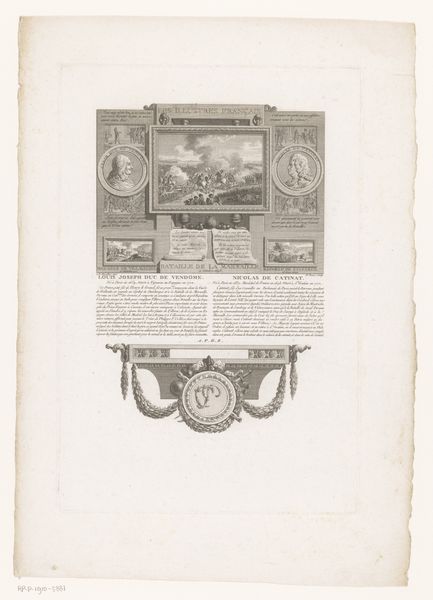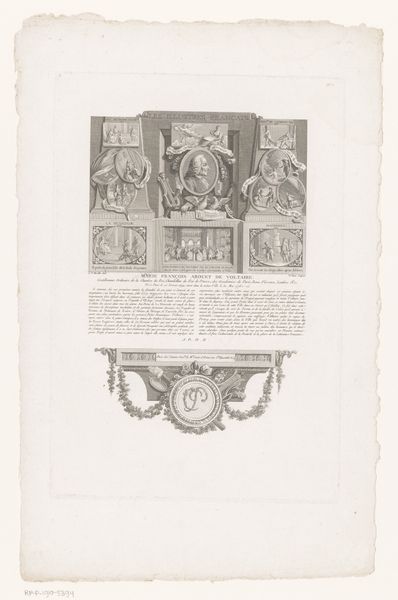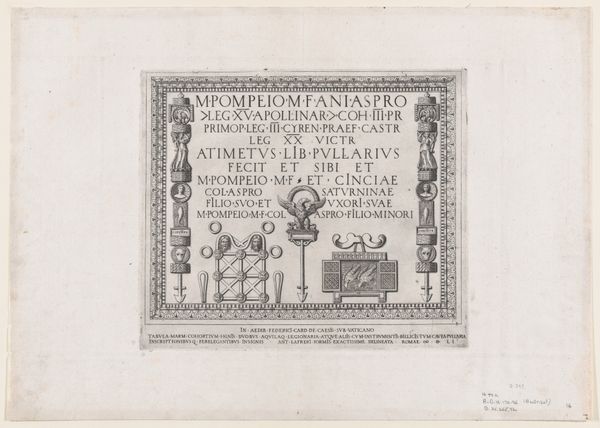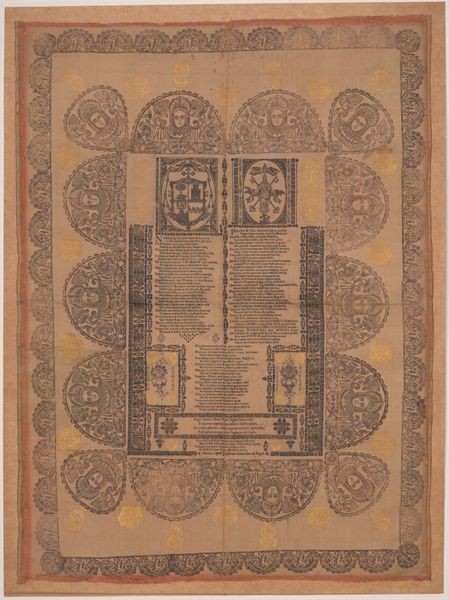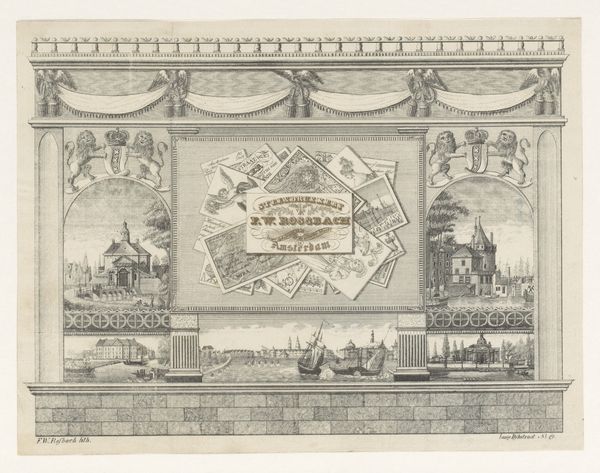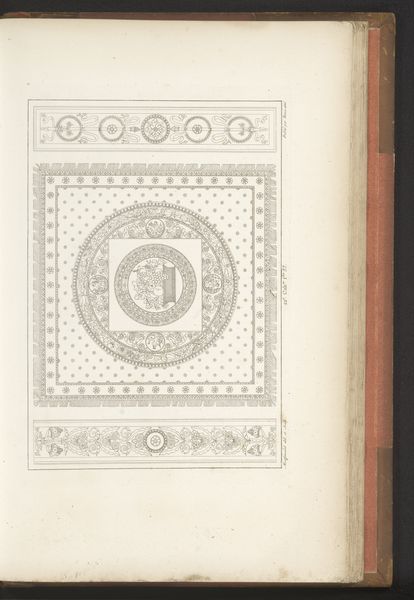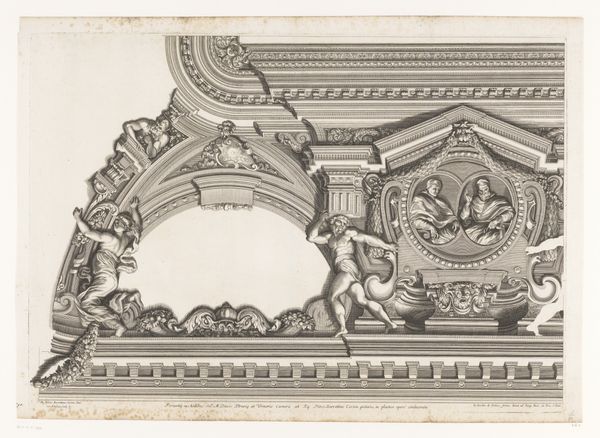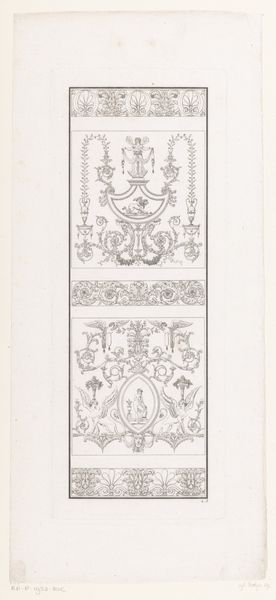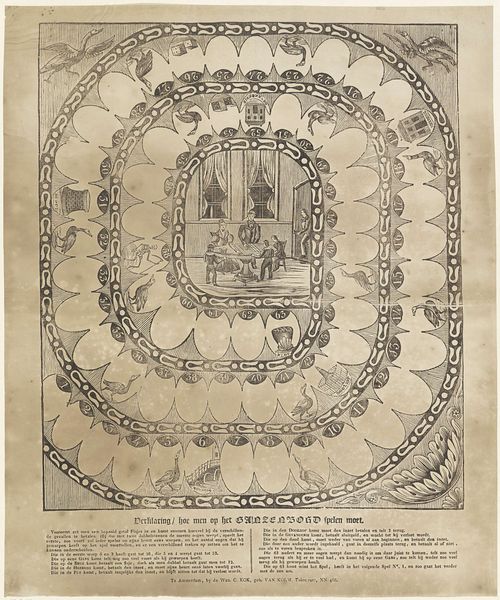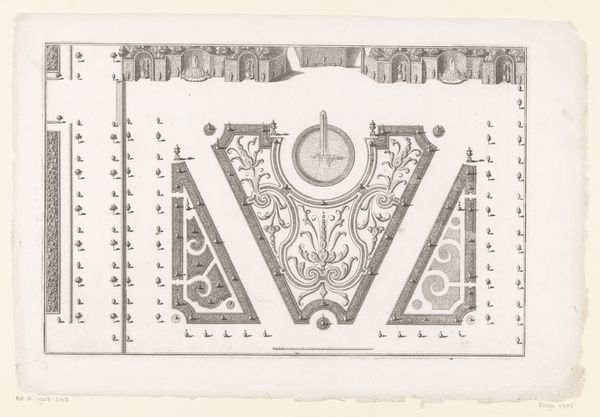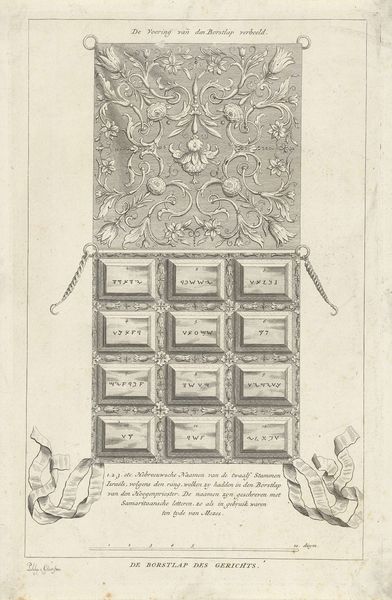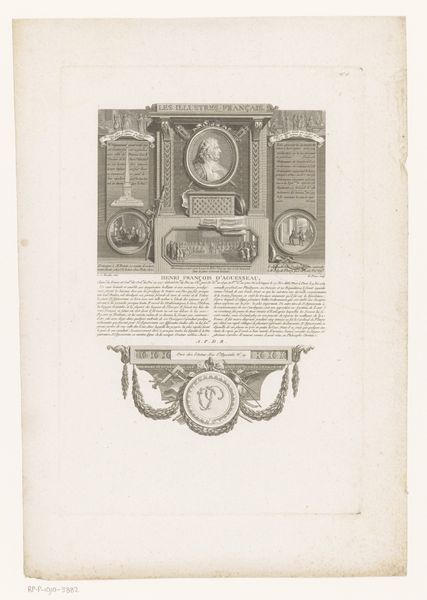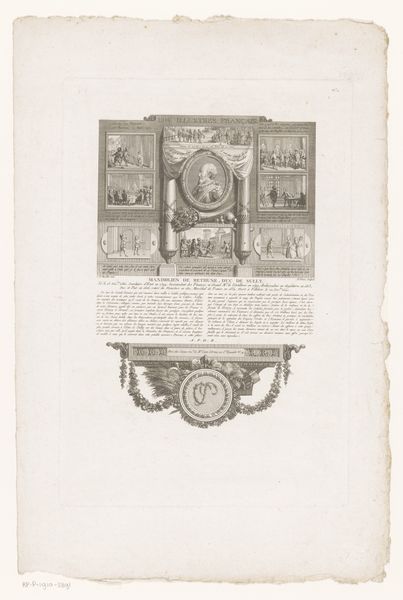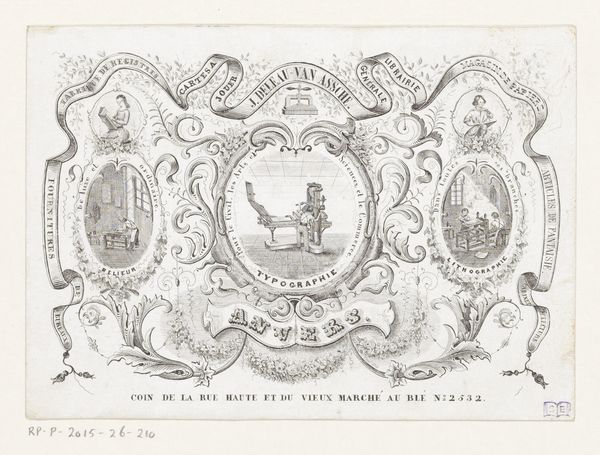
Reclame voor F. Prudent, fabrikant van kasboeken en boekbanden te Brussel c. 1847 - 1872
graphic-art, print, typography, engraving
graphic-art
old engraving style
typography
engraving
Dimensions: height 145 mm, width 215 mm
Copyright: Rijks Museum: Open Domain
Editor: This is an interesting piece! It's a print titled "Reclame voor F. Prudent, fabrikant van kasboeken en boekbanden te Brussel," which I believe translates to "Advertisement for F. Prudent, manufacturer of account books and bookbindings in Brussels," dating from around 1847 to 1872. The engraving is very detailed, almost like a technical drawing combined with ornate flourishes. What's your take on this advertisement? Curator: My initial reaction centers on the means of production illustrated here. Look at the printing press depicted so prominently in the center. It’s not just selling a finished product, it's displaying the labor, the very engine that produces the commodities. The stacks of books, labelled "Fragile", packaged up ready to be shipped— it focuses our attention on production and circulation. Editor: So, the artist is consciously drawing attention to the process, not just the end product? Curator: Precisely. The decorative border also provides context, it elevates bookbinding. However, consider that typography itself functions as a kind of machine, stamping out repeated forms and, this graphic straddles a blurred boundary between trade and craft. Why do you think they used this particular engraving technique? Editor: Possibly because engravings can achieve very fine detail, suggesting the high quality of Prudent's work, or the impression of that high quality on potential consumers. Also, given the era, maybe it was just the most effective means available for mass production of an image. Curator: Good point. Consider too how these prints circulated. Were they included in books, displayed in shop windows, pasted onto walls? These material details significantly shift how we might understand the graphic. Editor: I hadn't thought about that. So, it's important to consider not just what's depicted, but how it was made, and how that making shaped its audience, in the service of advertising. Curator: Exactly! And by extension, how materiality and production shape cultural value.
Comments
No comments
Be the first to comment and join the conversation on the ultimate creative platform.
